BRI Stories | A journey from student to translator on the China-Thailand railway
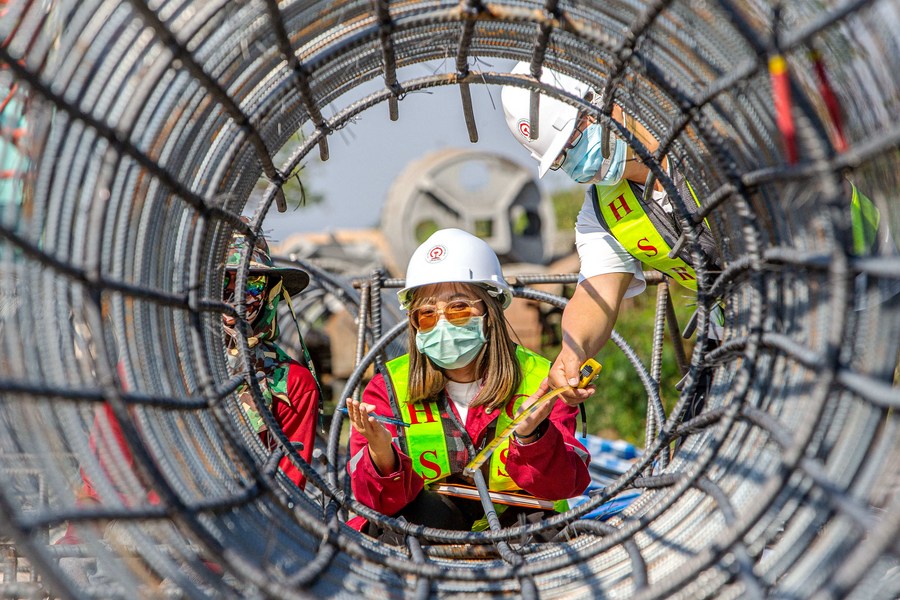
Pannaros Boonserm works at a construction site of the China-Thailand railway in Nakhon Ratchasima province, Thailand, Feb. 23, 2023. (Xinhua/Wang Teng)
BANGKOK, April 28 (Xinhua) -- Pannaros Boonserm, 33, is a translator in a supervision company for the first section of the China-Thailand railway project.
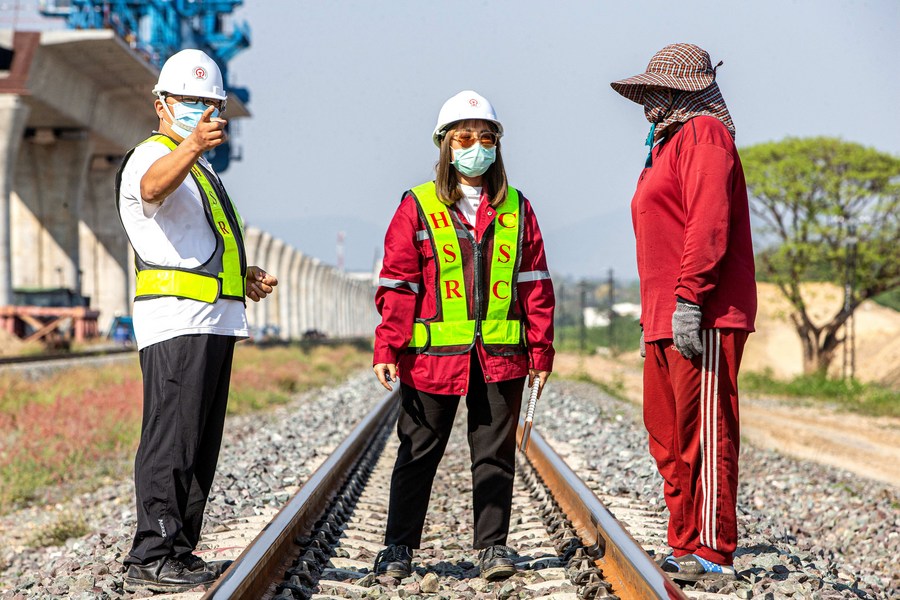
Pannaros Boonserm (C) works at a construction site of the China-Thailand railway in Nakhon Ratchasima province, Thailand, Feb. 23, 2023.(Xinhua/Wang Teng)
The China-Thailand railway, an important part of the trans-Asian railway network, will be Thailand's first standard-gauge high-speed railway. The first section, linking the Thai capital of Bangkok with the Nakhon Ratchasima province, in which Pannaros lives for the moment with her grandparents, is expected to put into use in 2026 and shorten the travel time from more than four hours to over one hour.
When the second section finishes in 2029, the railway will be connected with the China-Laos railway. By then people can travel by train from Bangkok, through Laos, to Kunming in southwest China's Yunnan Province.
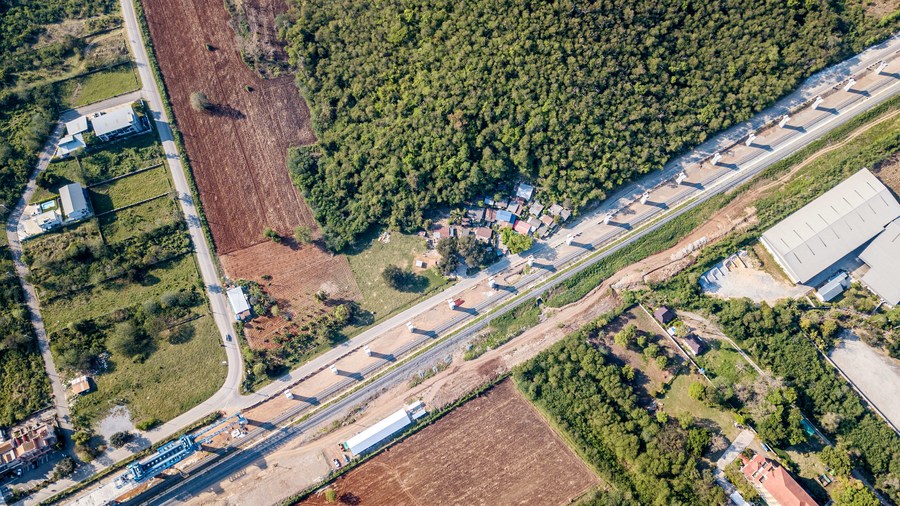
This aerial photo taken on Feb. 23, 2023 shows a construction site of the China-Thailand railway in Nakhon Ratchasima province, Thailand.(Xinhua/Wang Teng)
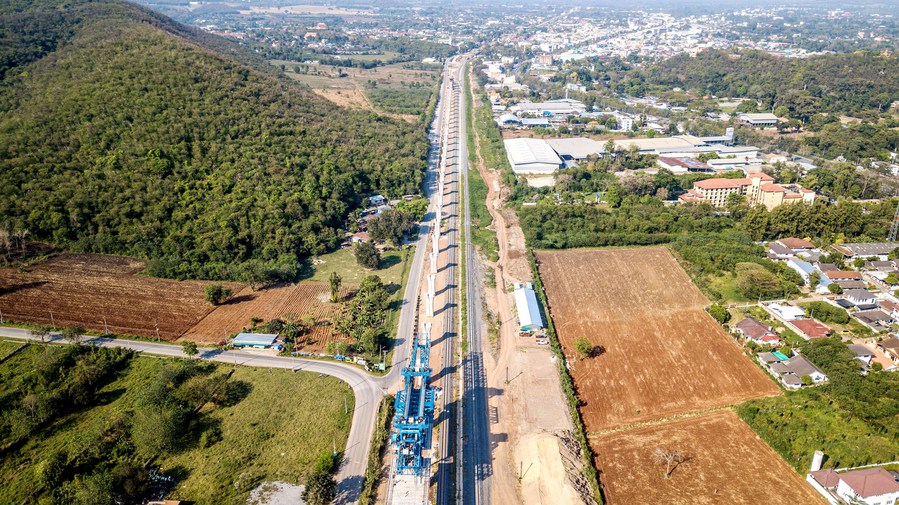
This aerial photo taken on Feb. 23, 2023 shows a construction site of the China-Thailand railway in Nakhon Ratchasima province, Thailand.(Xinhua/Wang Teng)

This aerial photo taken on Feb. 23, 2023 shows a construction site of the China-Thailand railway in Nakhon Ratchasima province, Thailand.(Xinhua/Wang Teng)
Having studied in Nankai University in north China's Tianjin Municipality for several years, Pannaros visited many places in China and witnessed how high-speed railways have changed local residents' life. She believed the China-Thailand railway will not only facilitate the traveling of local residents, but also help revive the tourism sector and economic growth in regions along the way.
"It took me more than 20 hours when I came back from Kunming to Thailand's Chiang Mai in 2012. The trip was exhausting," Pannaros recalled.

This undated file photo shows Pannaros Boonserm posing for graduation photos at Nankai University in Tianjin, north China.(Xinhua)

Pannaros Boonserm waits at Pak Chong railway station in Nakhon Ratchasima province, Thailand, Feb. 23, 2023.(Xinhua/Wang Teng)

Pannaros Boonserm (R) works at the supervision company for the first section of the China-Thailand railway project in Nakhon Ratchasima province, Thailand, Feb. 23, 2023.(Xinhua/Wang Teng)
Pannaros said she couldn't wait to see the completion of the new railway, which she was so proud to be part of. "when the railway is finished, I'm definitely going to take it all the way northward to Kunming," she said.

Pannaros Boonserm works at the supervision company for the first section of the China-Thailand railway project in Nakhon Ratchasima province, Thailand, Feb. 23, 2023. (Xinhua/Wang Teng)
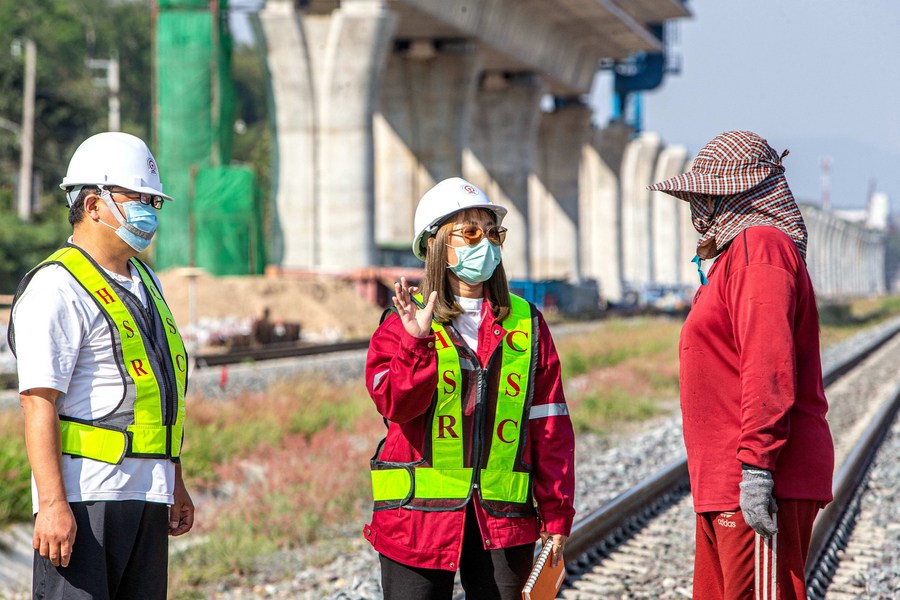
Pannaros Boonserm (C) works at a construction site of the China-Thailand railway in Nakhon Ratchasima province, Thailand, Feb. 23, 2023. (Xinhua/Wang Teng)


